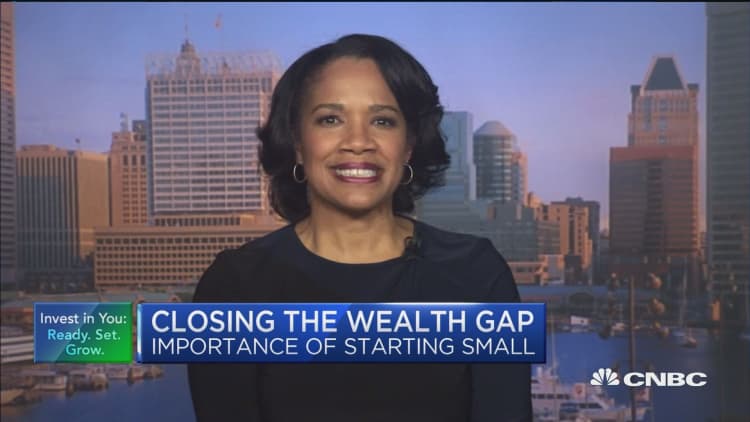Many Americans describe their situation as financially stable, but economic fragility is persistent across the U.S., especially related to income level, educational attainment, and ethnicity and race. An unexpected expense of $400 can force more than one-third of American adults into a difficult financial situation.
That's according to the just-released "Report on the Economic Well-being of U.S. Households for 2018," a study that Fed has been conducting since 2013. The Fed survey finds that many families have experienced substantial gains since 2013, but the decade-long economic expansion and the low unemployment has done "little to narrow the persistent economic disparities by race, education, and geography."
The Fed indicated that a primary goal of the 2018 study was to explore the reasons behind persistent financial fragility across much of the U.S.
Seventy-five percent of adults say they are either doing "okay" or "living comfortably," up 12 percentage points from the first study in 2013. The picture changes when race is factored into the responses. Nearly 8 in 10 whites are at least doing okay financially versus two-thirds of blacks and Hispanics, and that gap has not budged since 2013.
Emergency expenses
If faced with an unexpected expense of $400, 61% of adults could cover it with cash, savings, or a credit card paid off at the next statement. But 27% would have to borrow or sell something to pay for the expense; 12% would not be able to cover the expense.
Seventeen percent of adults are not able to pay all of their current month's bills in full, led by credit card bills. Another 12 percent of adults would be unable to pay their current month's bills if they also had an unexpected $400 expense that they had to pay.
A recent survey from the New York Fed found an alarming rise in credit card delinquencies among younger Americans of 90 days or more.
Medical expenses remain a point of financial stress, with one-fifth of adults saying they had major, unexpected medical bills to pay in the prior year. One quarter of adults said they skipped necessary medical care in 2018 because they were unable to afford the cost.
Race and limited access to financial services
The percentage of American adults who remain unbanked and underbanked are higher among minorities. Fourteen percent of blacks and 11% of Hispanics are unbanked, versus 4 percent of whites. The unbanked or underbanked also are more likely to have low income, and less education. One percent of those with incomes over $40,000 are unbanked, versus 14 percent of those with incomes under that threshold.
More from Invest in You
Military families are living on the financial edge
Retirement looms. Here is how to catch up on investing, fast
Think buying a home is a great investment? Think again
Being unbanked leads to reliance on higher-cost financial services. One-fifth of adults still cannot access traditional banks and credit unions. and 89% of people who use alternative financial services purchase a money order or cash a check at a place other than a bank. Twenty-eight percent borrowed money, including payday loans, paycheck advances, pawn shop or auto title loans, and tax refund advances.
Thirty-five percent of blacks and 23 percent of Hispanics use alternative financial services, compared to 11 percent of whites.
More than one-fourth of blacks are not confident that a new credit card application would be approved if they applied—over twice the rate among whites.
Retirement savings remains a struggle
Only 36% of non-retired adults think that their retirement saving is on track. One-quarter have no retirement savings or pension. Among non-retired adults over the age of 60, less than half (45%) believe that their retirement saving is on track.
Even among Americans with access to 401(k) and IRA plans, Six in 10 told the Fed they have little or no comfort in managing their investments.

Education and race
The ballooning student loan debt, now at roughly $1.5 trillion and the second-largest source of debt in the U.S. after mortgages is a national crisis, with a typical monthly payment between $200 and $299 per month. But higher education remains a key to economic well-being.
Adults with a bachelor's degree or higher are significantly more likely to be doing at least okay financially (87%) than those with a high school degree or less (64%). However, the Fed survey finds that minorities are much more likely to attend for-profit schools, and struggle with student loans after graduation and question their educational choices.
More than twice as many Hispanics went to a for-profit institution as did whites; this rate was five times the rate of whites among African-Americans. Over one-fifth of borrowers who attended private for-profit institutions are behind on student loan payments, versus 8 percent who attended public institutions and 5 percent who attended private not-for-profit institutions.
Half of those who attended a private for-profit institution say that they would attend a different school if they had a chance to go back and make their college choices again. By comparison, about one-quarter of those who attended public or private not-for-profit institutions would want to attend a different school.
Check out 3 Things Experts Say to Do if You Win the Lottery via Grow with Acorns+CNBC.
Disclosure: NBCUniversal and Comcast Ventures are investors in Acorns.






